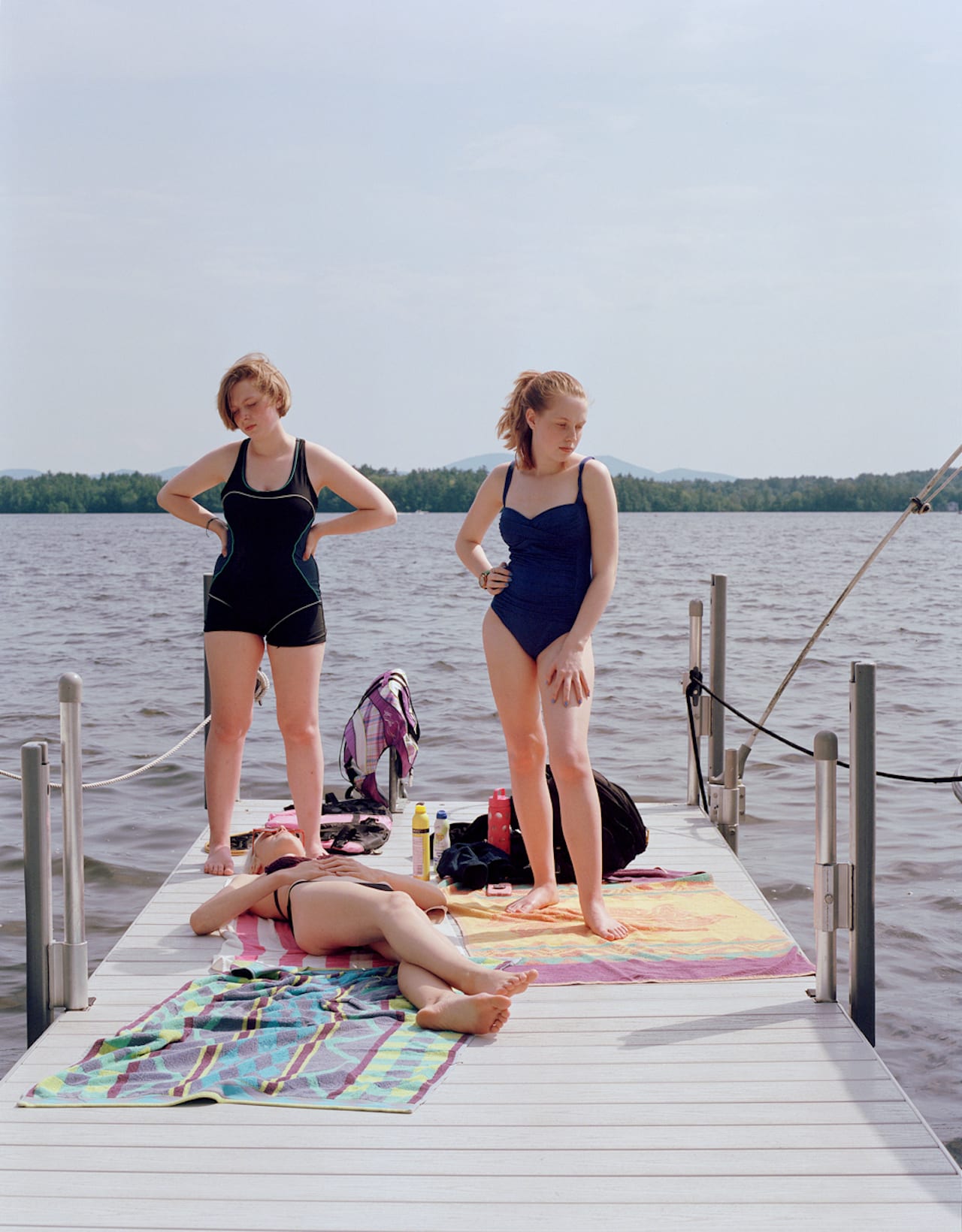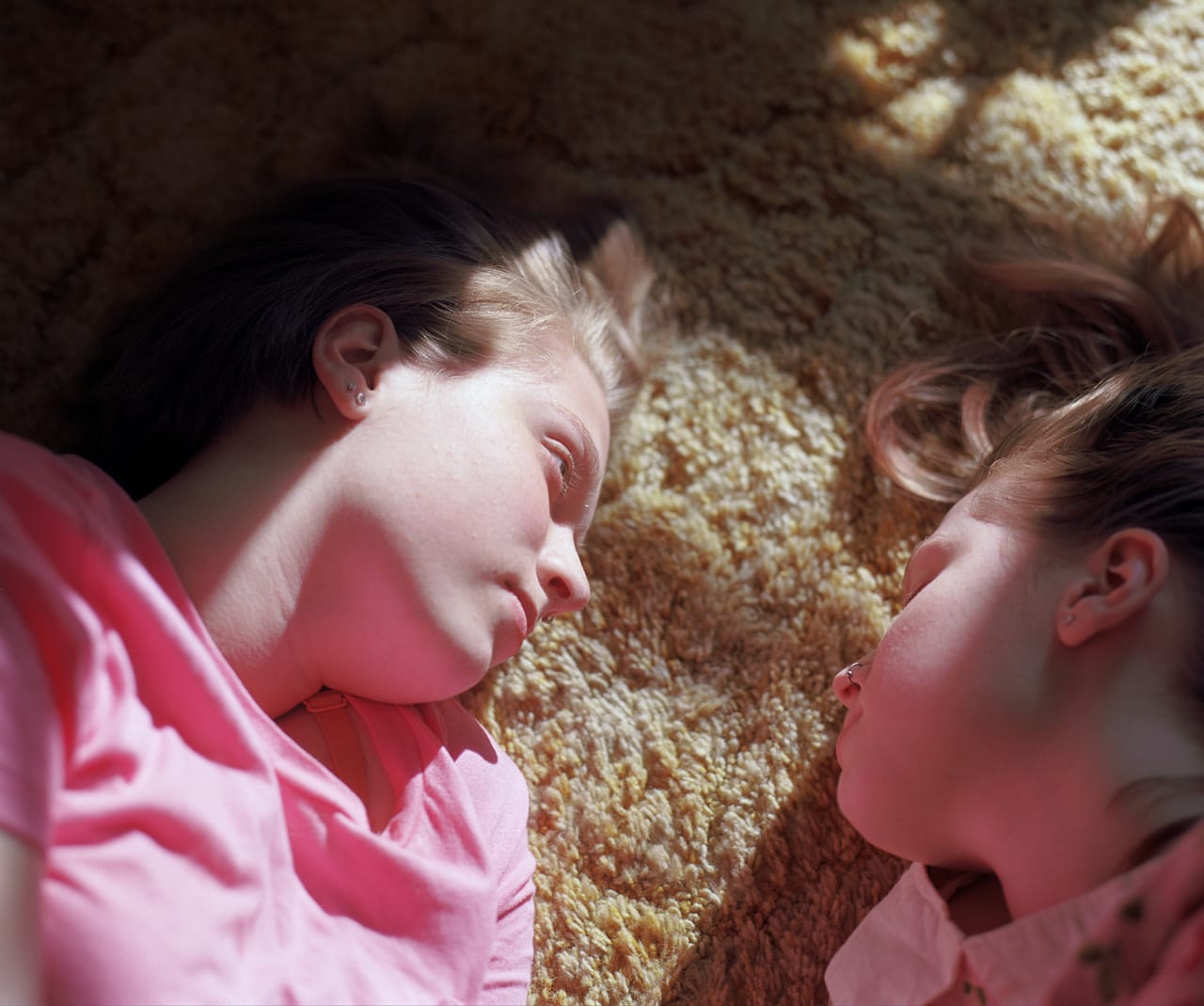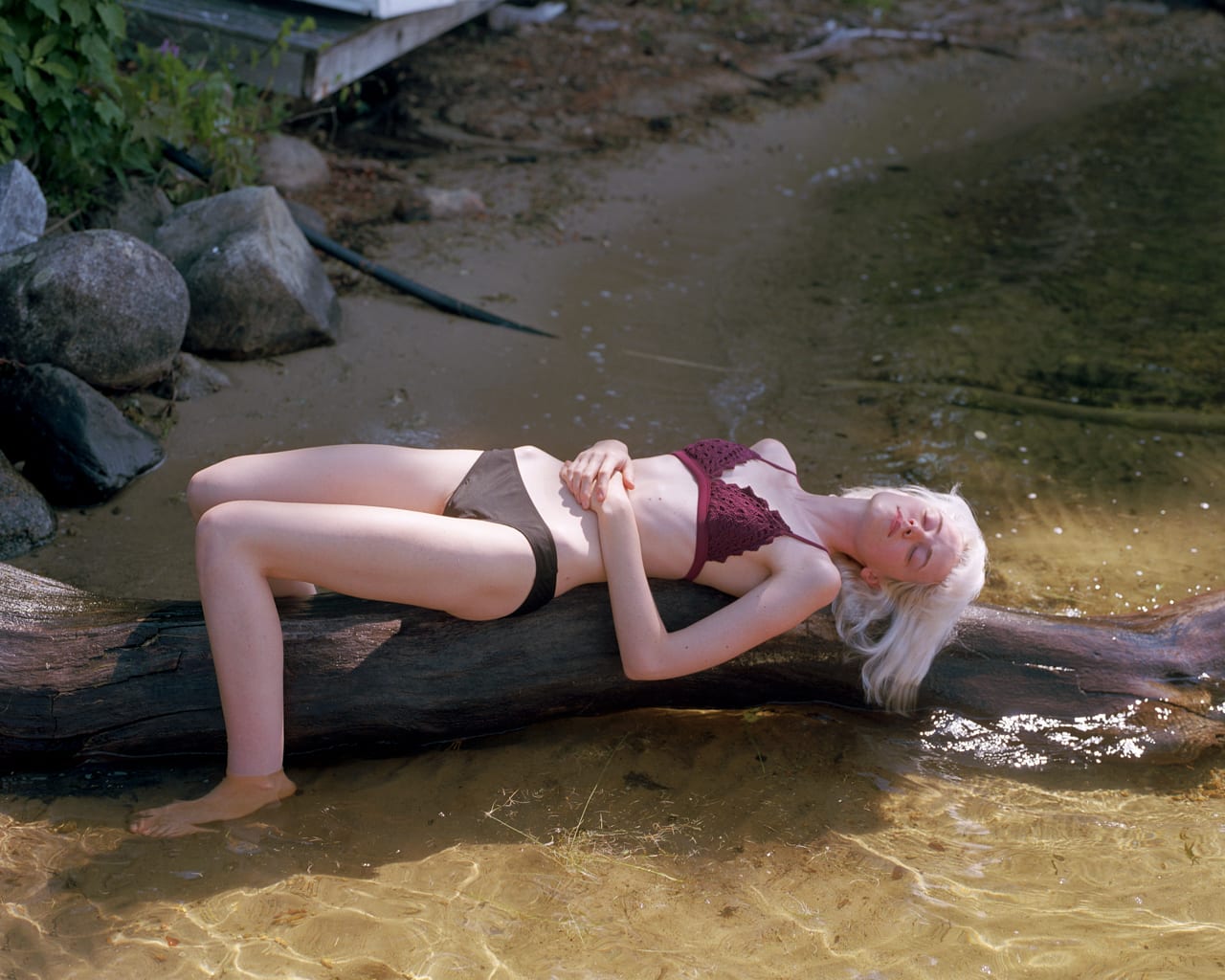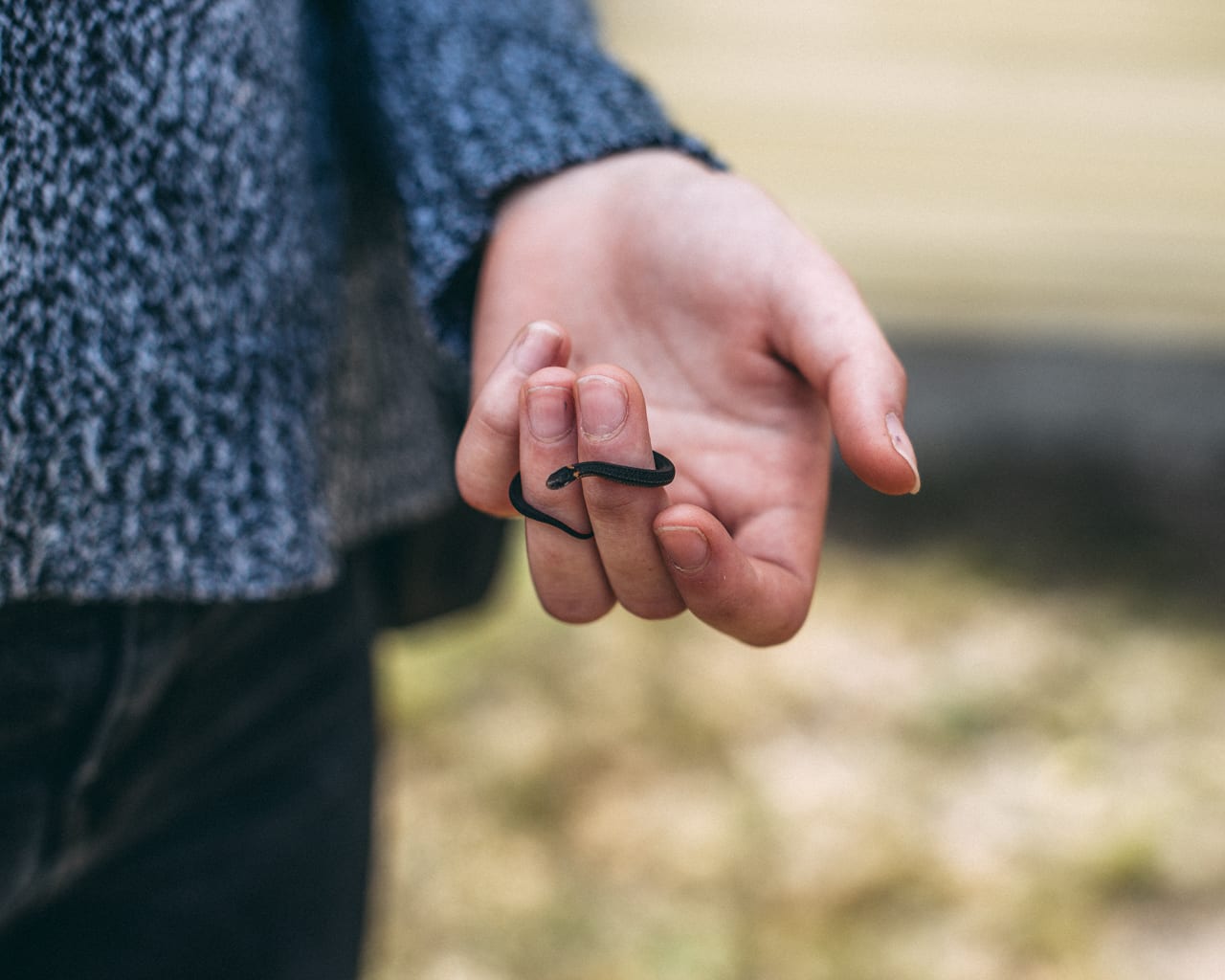“A lot of my work has undertones of female sexuality and ritual, because photography was a place where it was okay to explore those things,” says Tabitha Barnard, the oldest of four sisters raised in a close-knit, religious community in rural Maine. “In photographing my sisters, and in trying to find a private place to do that, we kind of found this escape. I could always just tell my parents it was make-believe.”
Growing up, the sisters were surrounded by stories of witches and monsters, often read to them by their mother with the intention of scaring them. They ended up becoming a topic of fascination instead, inspiring elaborate fantasy games the sisters would make up and play together. As Barnard got older, she began to look into the darker stories in the Bible, and was captivated by tales of wicked and promiscuous women like the Witch of Endor and the Whore of Babylon.
“They’re supposed to be horrible, scary stories, but the descriptions in them are so visually enticing,” she explains.
When Barnard was introduced to photography at high school, photographing her sisters and their surroundings felt like a natural step. “We had a strange relationship when we were younger because we all have very different personalities, but through photography we became extremely close,” she says.
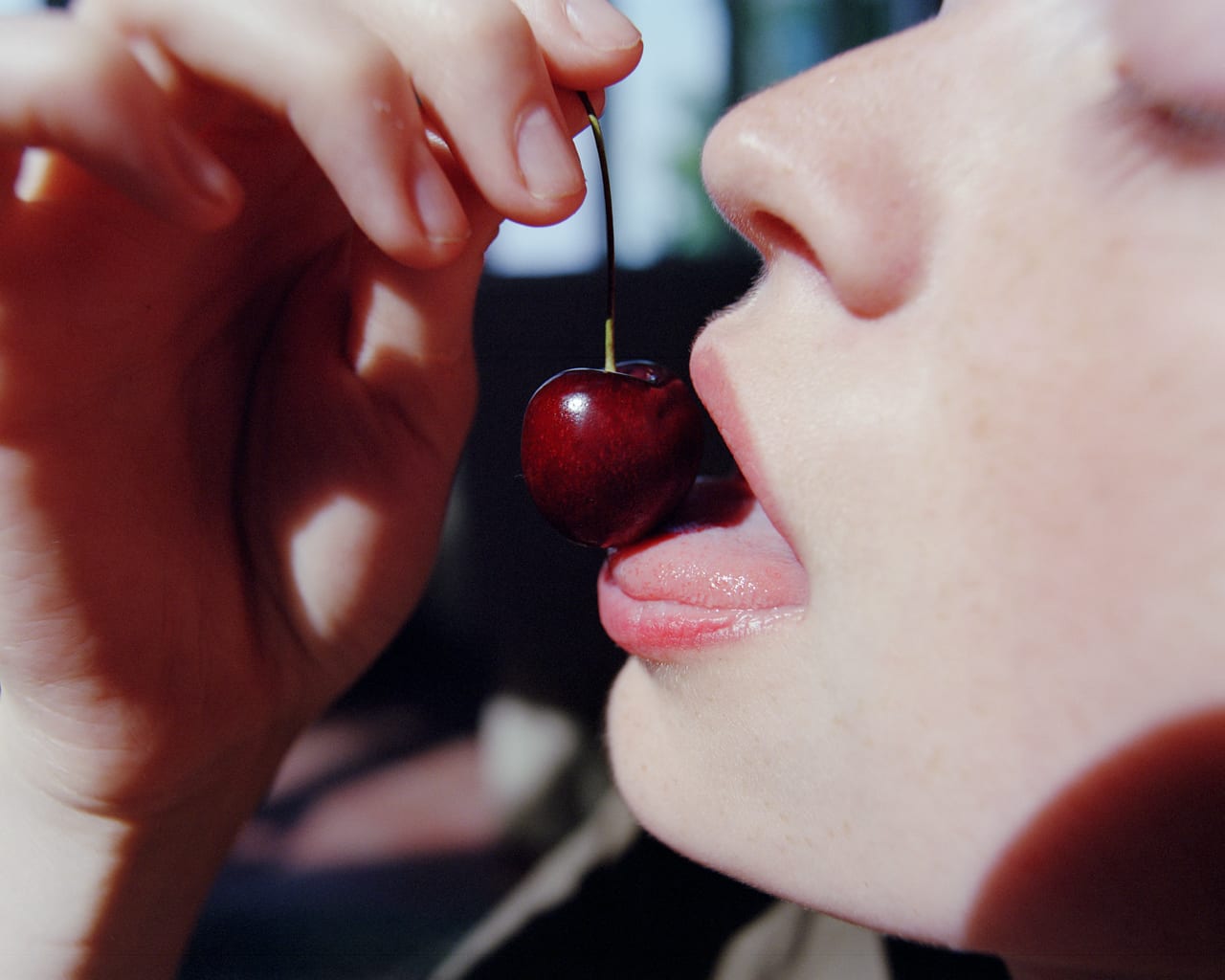
Female sexuality, rituals, and the forbidden nature of the occult became the themes Barnard consistently returned to, especially in her series The Cult of Womanhood, which she made while studying photography at the Maine College of Art. Aesthetically Barnard is influenced by photographers such as Rineke Dijkstra and Hellen Van Meene, but she draws on films and TV shows, especially Sofia Coppola and her 1999 film The Virgin Suicides. Even so, as her has work progressed, it has became less theatrical.
“When I first started it was more based on the setup, I was very into organising every aspect of the photo. Now it’s so much more collaborative,” she says. “It’s become more based in our actual reality and the time that we spend together.”
And while Barnard’s work celebrates the bond between women, something that was prevalent in her religious community, it is also critical of the church and women’s place within it. “When I was growing up, there were a lot of women that I interacted with in the church who I loved, and were amazing people, and were huge influences on me, but there were also a lot of situations where their views were very anti-feminist,” she says.
Barnard recalls sharing her experience of being catcalled, for example, only to be told that she must have been dressed inappropriately. For many around her, both parties are at fault if a woman is assaulted by a man; as such female sexuality, bodies, and body image are important issues in her work. “I definitely had experiences that made me want to take my own work and empower women,” she says.
